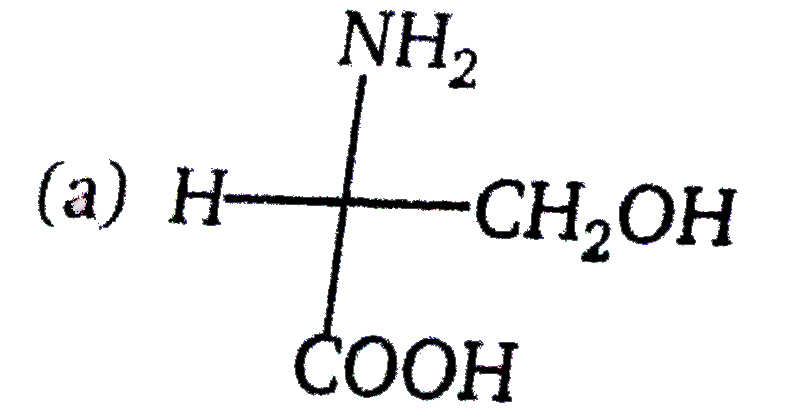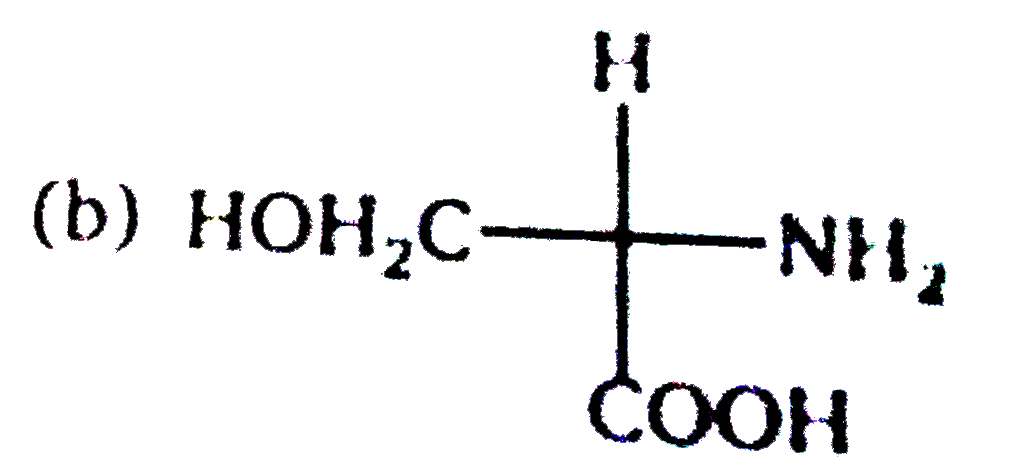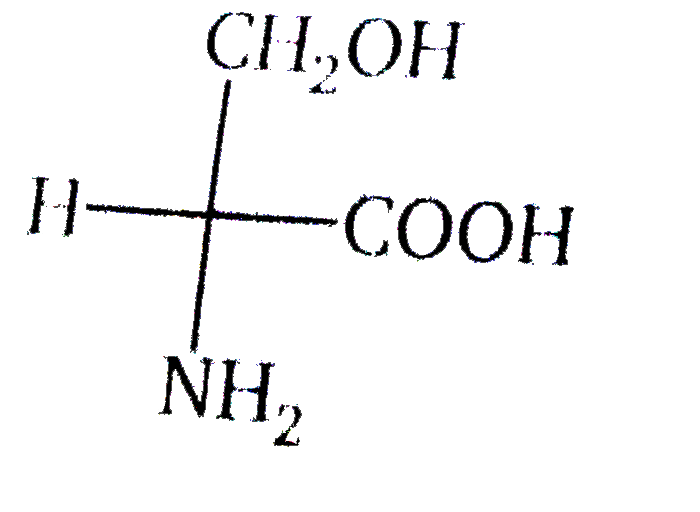Three amino acids are given below: Alanine Aspartic acid and Lysine
i. Make two tripeptides using these amino acids and mark the peptide linkage in both cases.
ii. Represent Alanine in the zwitter ionic form.
To solve the given question, we will follow these steps:
Step 1: Identify the Amino Acids
We have three amino acids:
1. Alanine: \( CH_3CH(COOH)(NH_2) \)
2. Aspartic Acid: \( HOOC-CH_2CH(COOH)(NH_2) \)
3. Lysine: \( H_2N-(CH_2)_4-CH(COOH)(NH_2) \)
Step 2: Structure of the Amino Acids
- Alanine:
- Structure:
NH2|H2N−C−COOH|CH3
- Aspartic Acid:
- Structure:
NH2|H2N−C−COOH|CH2∣COOH
- Lysine:
- Structure:
NH2|H2N−C−COOH|CH2|CH2|CH2∣CH2
Step 3: Forming the Tripeptides
To form a tripeptide, we need to combine three amino acids through peptide bonds. A peptide bond is formed when the carboxyl group of one amino acid reacts with the amino group of another, releasing a molecule of water (H2O).
Tripeptide 1: Alanine - Aspartic Acid - Lysine (AAL)
1. Combine Alanine and Aspartic Acid:
- Remove \( OH \) from the carboxyl group of Alanine and \( H \) from the amino group of Aspartic Acid.
- Resulting structure:
H2N−CH(CH3)−C(=O)−NH−CH(COOH)−CH2−COOH
2. Combine the above product with Lysine:
- Remove \( OH \) from the carboxyl group of Aspartic Acid and \( H \) from the amino group of Lysine.
- Resulting structure:
H2N−CH(CH3)−C(=O)−NH−CH(COOH)−CH2−CO−NH−(CH2)4−COOH
Tripeptide 2: Aspartic Acid - Alanine - Lysine (AAL)
1. Combine Aspartic Acid and Alanine:
- Remove \( OH \) from the carboxyl group of Aspartic Acid and \( H \) from the amino group of Alanine.
- Resulting structure:
H2N−CH(COOH)−CH2−C(=O)−NH−CH(CH3)−COOH
2. Combine the above product with Lysine:
- Remove \( OH \) from the carboxyl group of Alanine and \( H \) from the amino group of Lysine.
- Resulting structure:
H2N−CH(COOH)−CH2−C(=O)−NH−CH(CH3)−C(=O)−NH−(CH2)4−COOH
Step 4: Marking the Peptide Linkages
In both tripeptides, the peptide linkages are represented as:
- Peptide Linkage: \( C(=O)-NH \)
Step 5: Representing Alanine in Zwitterionic Form
In the zwitterionic form, the amino acid has both a positive and a negative charge but is overall neutral.
1. Start with the structure of Alanine:
H2N−CH(CH3)−COOH
2. The carboxyl group (\(-COOH\)) loses a proton (\(H^+\)), becoming \(-COO^-\).
3. The amino group (\(-NH2\)) accepts a proton, becoming \(-NH3^+\).
The zwitterionic form of Alanine will be:
+NH3−CH(CH3)−COO−
Summary of Answers
1. Tripeptides:
- Tripeptide 1: Alanine - Aspartic Acid - Lysine
- Tripeptide 2: Aspartic Acid - Alanine - Lysine
- Peptide Linkages: \( C(=O)-NH \)
2. Zwitterionic Form of Alanine:
+NH3−CH(CH3)−COO−
We have three amino acids:
1. Alanine: \( CH_3CH(COOH)(NH_2) \)
2. Aspartic Acid: \( HOOC-CH_2CH(COOH)(NH_2) \)
3. Lysine: \( H_2N-(CH_2)_4-CH(COOH)(NH_2) \)
- Alanine:
- Structure:
NH2|H2N−C−COOH|CH3
- Aspartic Acid:
- Structure:
NH2|H2N−C−COOH|CH2∣COOH
- Structure:
NH2|H2N−C−COOH|CH2|CH2|CH2∣CH2
To form a tripeptide, we need to combine three amino acids through peptide bonds. A peptide bond is formed when the carboxyl group of one amino acid reacts with the amino group of another, releasing a molecule of water (H2O).
1. Combine Alanine and Aspartic Acid:
- Remove \( OH \) from the carboxyl group of Alanine and \( H \) from the amino group of Aspartic Acid.
- Resulting structure:
H2N−CH(CH3)−C(=O)−NH−CH(COOH)−CH2−COOH
- Remove \( OH \) from the carboxyl group of Aspartic Acid and \( H \) from the amino group of Lysine.
- Resulting structure:
H2N−CH(CH3)−C(=O)−NH−CH(COOH)−CH2−CO−NH−(CH2)4−COOH
1. Combine Aspartic Acid and Alanine:
- Remove \( OH \) from the carboxyl group of Aspartic Acid and \( H \) from the amino group of Alanine.
- Resulting structure:
H2N−CH(COOH)−CH2−C(=O)−NH−CH(CH3)−COOH
- Remove \( OH \) from the carboxyl group of Alanine and \( H \) from the amino group of Lysine.
- Resulting structure:
H2N−CH(COOH)−CH2−C(=O)−NH−CH(CH3)−C(=O)−NH−(CH2)4−COOH
In both tripeptides, the peptide linkages are represented as:
- Peptide Linkage: \( C(=O)-NH \)
In the zwitterionic form, the amino acid has both a positive and a negative charge but is overall neutral.
H2N−CH(CH3)−COOH
3. The amino group (\(-NH2\)) accepts a proton, becoming \(-NH3^+\).
+NH3−CH(CH3)−COO−
1. Tripeptides:
- Tripeptide 1: Alanine - Aspartic Acid - Lysine
- Tripeptide 2: Aspartic Acid - Alanine - Lysine
- Peptide Linkages: \( C(=O)-NH \)
+NH3−CH(CH3)−COO−
Topper's Solved these Questions
- SAMPLE QUESTION PAPER (CHEMISTRY )BOOK - CBSE MODEL PAPERCHAPTER - SAMPLE QUESTION PAPER (CHEMISTRY )EXERCISE - SECTION D
1 Videos
- SAMPLE QUESTION PAPER (CHEMISTRY )BOOK - CBSE MODEL PAPERCHAPTER - SAMPLE QUESTION PAPER (CHEMISTRY )EXERCISE - SECTION B
13 Videos
- SAMPLE PAPER 2023 TERM IBOOK - CBSE MODEL PAPERCHAPTER - SAMPLE PAPER 2023 TERM IEXERCISE - SECTION E
7 Videos
Similar Questions
Knowledge Check
The given fatty acid is known as
CH3(CH2)7CH=CH(CH2)7COOHAPlamitic acidBOleic acidCStearic acidDArachidonic acidLysine, H2N−(CH2)4−CH∣ NH2−COOH is...... .
Aα-amino acidBbasic amino acidCamino acid synthesised in bodyDβ-amino acidSerine (HOCH2CH(NH2)COOH) is an essential amino acid. The correct Fisher projection of serine is
A B
B C
C D
D
Why is CH2=CH−COOH a stronger acid than CH3CH2COOH?
View SolutionArrange the basic strength of the following compounds.
(i)CH2=CHCH2NH2
(ii)CH3CH2CH2NH2
(iii)CH≡C−CH2NH2
View SolutionArrange the following as stated :
'Increasing order of acidic strength'.
ClCH2COOH,CH3CH2COOH,ClCH2CH2COOH,(CH3)2CHCOOH,CH3COOH.
View SolutionLysine, H2N−(CN2)4CH∣NH2−COOH is
(a) α -amino acid
(b) Basic amino acid
( c) Amino acid synthesis in body
(d) β -Amino acid
View SolutionThe correct order of acidity in given compounds
(i) FCH2COOH
(ii) CICH2COOH
(iii) NO2CH2COOH
(iv) CH3COOH.
View Solution
